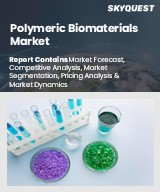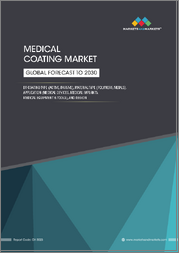
|
시장보고서
상품코드
1775509
의료용 임플란트 시장 : 예측(2025-2030년)Medical Implants Market - Forecasts from 2025 to 2030 |
||||||
의료용 임플란트 시장은 2025년 1,156억 3,200만 달러에서 2030년에는 1,633억 9,900만 달러로, CAGR 7.16%로 성장할 것으로 예측됩니다.
의료용 임플란트 시장은 만성질환의 유병률 증가, 세계 인구의 고령화, 의료 전문가들의 임플란트 이점에 대한 인식이 높아지면서 2025년부터 2030년까지 큰 폭으로 성장할 것으로 예상됩니다. 나사, 막대, 핀, 치과용 보철물 등의 의료용 임플란트는 정형외과, 심혈관, 신경, 치과 등의 분야에서 손상된 생체 구조를 강화하거나 대체하는 역할을 합니다. 이 보고서는 주요 시장 촉진요인, 세분화, 지역 동향을 조사하여 이 역동적인 분야를 탐색하는 업계 전문가에게 인사이트를 제공합니다.
시장 촉진요인
만성질환 유병률 증가
심혈관질환, 정형외과 질환, 치과 질환 등 만성질환의 발생률 증가는 의료용 임플란트 시장의 주요 촉진요인입니다. 이러한 질환은 노화나 생활습관 요인에 의해 악화되는 경우가 많으며, 치료 및 관리를 위해 임플란트가 필요한 경우가 많습니다. 예를 들어, 치과용 임플란트는 노화로 인해 치아가 상실되어 기능성과 심미성을 회복할 수 있는 내구성 있는 솔루션이 필요하기 때문에 높은 수요가 있습니다.
고령화 인구
전 세계 노인 인구의 증가는 의료용 임플란트 수요를 크게 증가시킬 것입니다. 노년층은 나이가 들면서 면역력이 떨어지기 때문에 관절염, 골다공증, 치아 상실 등의 증상에 걸리기 쉽고, 관절의 교체, 골절의 수복, 치아의 수복에 임플란트가 필요하게 됩니다. 노인 환자 수의 증가는 삶의 질과 이동성 향상에 있어 임플란트의 중요한 역할을 강조하고 있습니다.
임플란트의 장점에 대한 인식 증가
의료용 임플란트의 효과에 대한 의료 전문가와 환자들의 인식이 높아지면서 시장 확산의 원동력이 되고 있습니다. 임플란트는 정형외과나 치과와 같은 분야에서 환자의 예후를 개선하는 영구적인 고정 장치 또는 제거 가능한 장치로서 장기적인 솔루션을 제공합니다. 이러한 인식은 임플란트 기술의 발전과 맞물려 시장 기회를 확대하고 있습니다.
목차
제1장 주요 요약
제2장 시장 현황
- 시장 개요
- 시장 정의
- 조사 범위
- 시장 세분화
제3장 비즈니스 상황
- 시장 성장 촉진요인
- 시장 성장 억제요인
- 시장 기회
- Porter's Five Forces 분석
- 업계 밸류체인 분석
- 정책과 규제
- 전략적 제안
제4장 기술 전망
제5장 의료용 임플란트 시장 : 유형별
- 소개
- 정형외과
- 심혈관계
- 척추
- 안과
- 치과
- 페이셜
- 기타
제6장 의료용 임플란트 시장 : 재료별
- 소개
- 금속·합금
- 세라믹
- 폴리머
- 천연
제7장 의료용 임플란트 시장 : 최종사용자별
- 소개
- 병원
- 외래 수술 센터
- 전문 클리닉
- 연구·학술기관
제8장 의료용 임플란트 시장 : 지역별
- 소개
- 북미
- 유형별
- 재료별
- 최종사용자별
- 국가별
- 미국
- 캐나다
- 멕시코
- 남미
- 유형별
- 재료별
- 최종사용자별
- 국가별
- 브라질
- 아르헨티나
- 기타
- 유럽
- 유형별
- 재료별
- 최종사용자별
- 국가별
- 영국
- 독일
- 프랑스
- 스페인
- 기타
- 중동 및 아프리카
- 유형별
- 재료별
- 최종사용자별
- 국가별
- 사우디아라비아
- 아랍에미리트
- 기타
- 아시아태평양
- 유형별
- 재료별
- 최종사용자별
- 국가별
- 중국
- 일본
- 인도
- 한국
- 대만
- 기타
제9장 경쟁 환경과 분석
- 주요 기업과 전략 분석
- 시장 점유율 분석
- 합병, 인수, 합의, 협업
- 경쟁 대시보드
제10장 기업 개요
- Johnson & Johnson Services, Inc.
- Abbott Laboratories
- Boston Scientific Corporation
- Cardinal Health, Inc.
- Conmed Corporation
- Globus Medical, Inc.
- Integra Lifesciences Holdings Corporation
- Smith & Nephew PLC
- Stryker Corporation
- Zimmer Biomet
제11장 부록
- 통화
- 가정
- 기준 연도와 예측 연도 타임라인
- 이해관계자에 대한 주요 이점
- 조사 방법
- 약어
The medical implants market is expected to grow from USD 115.632 billion in 2025 to USD 163.399 billion in 2030, at a CAGR of 7.16%.
The medical implants market is poised for significant growth from 2025 to 2030, driven by the rising prevalence of chronic diseases, an aging global population, and increasing awareness of implant benefits among healthcare professionals. Medical implants, including screws, rods, pins, and dental prosthetics, enhance or replace damaged biological structures across orthopedic, cardiovascular, neurological, and dental applications. This report examines key market drivers, segmentation, and regional trends, providing insights for industry experts navigating this dynamic sector.
Market Drivers
Rising Prevalence of Chronic Diseases
The increasing incidence of chronic conditions, such as cardiovascular diseases, orthopedic disorders, and dental issues, is a primary driver of the medical implants market. These conditions, often exacerbated by aging and lifestyle factors, require implants for treatment and management. For instance, dental implants are in high demand due to widespread tooth loss among aging populations, necessitating durable solutions to restore functionality and aesthetics.
Aging Population
The global rise in the geriatric population significantly boosts demand for medical implants. As immunity declines with age, older individuals are more susceptible to conditions like arthritis, osteoporosis, and tooth loss, necessitating implants for joint replacements, fracture repairs, and dental restorations. The growing number of elderly patients underscores the critical role of implants in improving quality of life and mobility.
Increasing Awareness of Implant Benefits
Growing awareness among healthcare professionals and patients about the efficacy of medical implants is driving market adoption. Implants offer long-term solutions, either as permanent fixtures or removable devices, enhancing patient outcomes in areas like orthopedics and dentistry. This awareness, coupled with advancements in implant technology, is expanding market opportunities.
Market Segmentation
By Materials
The market is segmented into metals and alloys, ceramics, polymers, and natural materials. Ceramics are expected to see significant demand due to their durability, resistance to high pressure, and compatibility with applications like implanted sensors, stimulators, and drug delivery systems. Their ability to withstand extreme conditions makes them ideal for diverse medical implant applications. Metals, polymers, and natural materials also play key roles, catering to specific needs like strength or biocompatibility.
Regional Insights
North America: Market Leader
North America, particularly the U.S., is expected to hold a significant market share due to its advanced healthcare infrastructure, high disposable incomes, and widespread adoption of cutting-edge medical technologies. The region's aging population and high prevalence of chronic diseases, such as dental cavities and orthopedic conditions, drive demand for implants. Supportive reimbursement policies and robust R&D further strengthen North America's dominance.
Asia Pacific: Rapid Growth
Asia Pacific is anticipated to experience rapid growth, fueled by increasing healthcare investments, rising chronic disease prevalence, and expanding geriatric populations in countries like China and India. Growing awareness of implant benefits and improving medical infrastructure are key catalysts, positioning the region as a high-growth market for medical implants.
Competitive Landscape
Leading companies are focusing on innovation to develop advanced implant materials and designs, such as ceramic and zirconia-based solutions, to meet diverse clinical needs. Strategic partnerships and regulatory approvals are critical for market expansion, with firms emphasizing biocompatibility and durability to maintain competitive advantage.
Conclusion
The medical implants market from 2025 to 2030 is set for robust growth, driven by chronic disease prevalence, an aging population, and increasing awareness of implant benefits. North America leads, while Asia Pacific emerges as a high-growth region. Ceramics are gaining traction among materials, and ongoing innovations offer significant opportunities for stakeholders to address evolving healthcare demands in orthopedic, dental, and other applications.
Key Benefits of this Report:
- Insightful Analysis: Gain detailed market insights covering major as well as emerging geographical regions, focusing on customer segments, government policies and socio-economic factors, consumer preferences, industry verticals, and other sub-segments.
- Competitive Landscape: Understand the strategic maneuvers employed by key players globally to understand possible market penetration with the correct strategy.
- Market Drivers & Future Trends: Explore the dynamic factors and pivotal market trends and how they will shape future market developments.
- Actionable Recommendations: Utilize the insights to exercise strategic decisions to uncover new business streams and revenues in a dynamic environment.
- Caters to a Wide Audience: Beneficial and cost-effective for startups, research institutions, consultants, SMEs, and large enterprises.
What do businesses use our reports for?
Industry and Market Insights, Opportunity Assessment, Product Demand Forecasting, Market Entry Strategy, Geographical Expansion, Capital Investment Decisions, Regulatory Framework & Implications, New Product Development, Competitive Intelligence
Report Coverage:
- Historical data from 2022 to 2024 & forecast data from 2025 to 2030
- Growth Opportunities, Challenges, Supply Chain Outlook, Regulatory Framework, and Trend Analysis
- Competitive Positioning, Strategies, and Market Share Analysis
- Revenue Growth and Forecast Assessment of segments and regions including countries
- Company Profiling (Strategies, Products, Financial Information, and Key Developments among others.
Market Segmentation:
By Type
- Orthopedic
- Cardiovascular
- Spinal
- Ophthalmic
- Dental
- Facial
- Others
By Material
- Metals And Alloys
- Ceramic
- Polymers
- Natural
By End-User
- Hospitals
- Ambulatory Surgical Centers
- Specialty Clinics
- Research and Academic Institutes
By Geography
- North America
- Europe
- Asia Pacific
- South America
- Middle East & Africa
TABLE OF CONTENTS
1. EXECUTIVE SUMMARY
2. MARKET SNAPSHOT
- 2.1. Market Overview
- 2.2. Market Definition
- 2.3. Scope of the Study
- 2.4. Market Segmentation
3. BUSINESS LANDSCAPE
- 3.1. Market Drivers
- 3.2. Market Restraints
- 3.3. Market Opportunities
- 3.4. Porter's Five Forces Analysis
- 3.5. Industry Value Chain Analysis
- 3.6. Policies and Regulations
- 3.7. Strategic Recommendations
4. TECHNOLOGICAL OUTLOOK
5. MEDICAL IMPLANTS MARKET BY TYPE
- 5.1. Introduction
- 5.2. Orthopedic
- 5.3. Cardiovascular
- 5.4. Spinal
- 5.5. Ophthalmic
- 5.6. Dental
- 5.7. Facial
- 5.8. Others
6. MEDICAL IMPLANTS MARKET BY MATERIAL
- 6.1. Introduction
- 6.2. Metals And Alloys
- 6.3. Ceramic
- 6.4. Polymers
- 6.5. Natural
7. MEDICAL IMPLANTS MARKET BY END-USER
- 7.1. Introduction
- 7.2. Hospitals
- 7.3. Ambulatory Surgical Centers
- 7.4. Specialty Clinics
- 7.5. Research and Academic Institutes
8. MEDICAL IMPLANTS MARKET BY GEOGRAPHY
- 8.1. Introduction
- 8.2. North America
- 8.2.1. By Type
- 8.2.2. By Material
- 8.2.3. By End-User
- 8.2.4. By Country
- 8.2.4.1. USA
- 8.2.4.2. Canada
- 8.2.4.3. Mexico
- 8.3. South America
- 8.3.1. By Type
- 8.3.2. By Material
- 8.3.3. By End-User
- 8.3.4. By Country
- 8.3.4.1. Brazil
- 8.3.4.2. Argentina
- 8.3.4.3. Others
- 8.4. Europe
- 8.4.1. By Type
- 8.4.2. By Material
- 8.4.3. By End-User
- 8.4.4. By Country
- 8.4.4.1. United Kingdom
- 8.4.4.2. Germany
- 8.4.4.3. France
- 8.4.4.4. Spain
- 8.4.4.5. Others
- 8.5. Middle East and Africa
- 8.5.1. By Type
- 8.5.2. By Material
- 8.5.3. By End-User
- 8.5.4. By Country
- 8.5.4.1. Saudi Arabia
- 8.5.4.2. UAE
- 8.5.4.3. Others
- 8.6. Asia Pacific
- 8.6.1. By Type
- 8.6.2. By Material
- 8.6.3. By End-User
- 8.6.4. By Country
- 8.6.4.1. China
- 8.6.4.2. Japan
- 8.6.4.3. India
- 8.6.4.4. South Korea
- 8.6.4.5. Taiwan
- 8.6.4.6. Others
9. COMPETITIVE ENVIRONMENT AND ANALYSIS
- 9.1. Major Players and Strategy Analysis
- 9.2. Market Share Analysis
- 9.3. Mergers, Acquisitions, Agreements, and Collaborations
- 9.4. Competitive Dashboard
10. COMPANY PROFILES
- 10.1. Johnson & Johnson Services, Inc.
- 10.2. Abbott Laboratories
- 10.3. Boston Scientific Corporation
- 10.4. Cardinal Health, Inc.
- 10.5. Conmed Corporation
- 10.6. Globus Medical, Inc.
- 10.7. Integra Lifesciences Holdings Corporation
- 10.8. Smith & Nephew PLC
- 10.9. Stryker Corporation
- 10.10. Zimmer Biomet
11. APPENDIX
- 11.1. Currency
- 11.2. Assumptions
- 11.3. Base and Forecast Years Timeline
- 11.4. Key benefits for the stakeholders
- 11.5. Research Methodology
- 11.6. Abbreviations



















